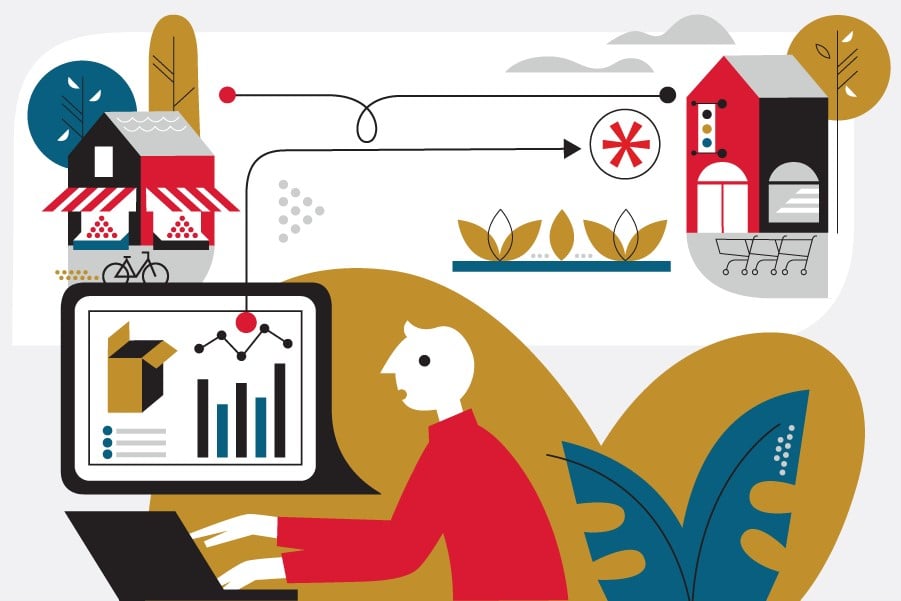Logistics
Industries
Technology & Innovations
E-commerce
E-commerce Fulfillment Services
Lease & Maintenance
Semi Trucks
Logistics
E-commerce
Lease & Maintenance
Buy Used Trucks

Expanding a successful e-commerce venture to include a brick-and-mortar retail channel is a significant milestone in the journey of any online business. Building on the foundation of digital success, the addition of a physical storefront opens up new avenues for growth, customer engagement, and brand visibility.
However, as online retailers venture into the realm of brick-and-mortar, ensuring seamless fulfillment becomes paramount to meeting evolving customer expectations. In this article, we explore the essential steps businesses must take to enhance their fulfillment processes, aligning them with customer demands and optimizing the transition from e-commerce to brick-and-mortar retail. By addressing fulfillment challenges head-on and leveraging the strengths of both channels, businesses can elevate their operations and deliver exceptional experiences across online and offline platforms.
Understanding the E-commerce to Brick-and-Mortar Shift
In the landscape of digital transformation, grasping the fundamental variances between e-commerce and brick-and-mortar retail is paramount for businesses contemplating a transition:
Evaluating Your Business Model
Before embarking on the transition journey, it's essential to conduct a thorough evaluation of your existing e-commerce business model:
Scalability: Assess whether your current e-commerce setup can support the expansion into physical retail, considering factors like product range and operational capacity.
Target Market and Location: Identify the target market for your brick-and-mortar store and select a location that aligns with your customer base, considering demographics and foot traffic.
Market Research: Conduct comprehensive research to gauge demand for your products in a physical retail setting, leveraging customer surveys, competitor analysis, and location-specific insights.
Planning Your Retail Expansion
When planning your brick-and-mortar retail store, several critical considerations must be addressed. Selecting a strategic location is paramount, aiming for areas with high foot traffic and demographics aligning with your target audience. Designing an inviting and intuitive layout is crucial, optimizing the shopping experience and incorporating technology where feasible. Maintaining consistency in marketing and brand transition across channels is essential, emphasizing exceptional customer service to uphold brand integrity and foster customer loyalty.
Cross-Promotion and Omnichannel Marketing
Maximize the strengths of both e-commerce and brick-and-mortar by implementing cross-promotion and omnichannel marketing strategies. Utilize your e-commerce platform to promote your physical store, offering exclusive in-store incentives and integrating online and offline experiences seamlessly. Encourage customers to visit your website through incentives like online discounts and loyalty programs.
Inventory and Supply Chain Considerations
Efficient inventory management and supply chain optimization are crucial aspects of the transition. Balance inventory between e-commerce and brick-and-mortar channels, avoiding overstocking or understocking. Invest in point-of-sale systems and streamline order fulfillment processes to accommodate both online and offline sales.
Customer Experience in Brick-and-Mortar
Enhance the in-store experience to differentiate your brick-and-mortar store. Train staff to provide exceptional service and plan engaging in-store events to attract customers. Incorporate technology to augment the shopping experience, such as digital catalogs and interactive displays.
Measuring and Analyzing In-Store Data
Collect and analyze data from your brick-and-mortar store to refine your strategies. Track customer behavior and sales data to optimize inventory and marketing efforts. Gather customer feedback to continuously improve the in-store experience and product offerings.
Top 10 Tips to Transition from E-commerce to Retail Sales
1. Reach out to established retailers and develop relationships with potential buyers.
2. Consider partnering with distributors to expand your reach.
3. Provide product samples to showcase the quality of your offerings.
4. Ensure competitive pricing to attract buyers.
5. Stay organized and utilize digital tools to manage relationships effectively.
6. Follow up persistently with potential buyers.
7. Maintain perseverance and patience throughout the process.
8. Monitor sales performance and customer feedback to refine strategies.
9. Network within the industry to explore new opportunities.
10. Prepare for financial considerations and regulatory compliance issues associated with brick-and-mortar operations.
By incorporating these strategies and insights into your transition plan, you can mitigate risks and optimize your chances of success in brick-and-mortar retail. Remember that the transition process requires adaptability and continuous assessment, but with careful planning and a customer-centric approach, you can navigate this shift to retail readiness effectively and achieve your business objectives.